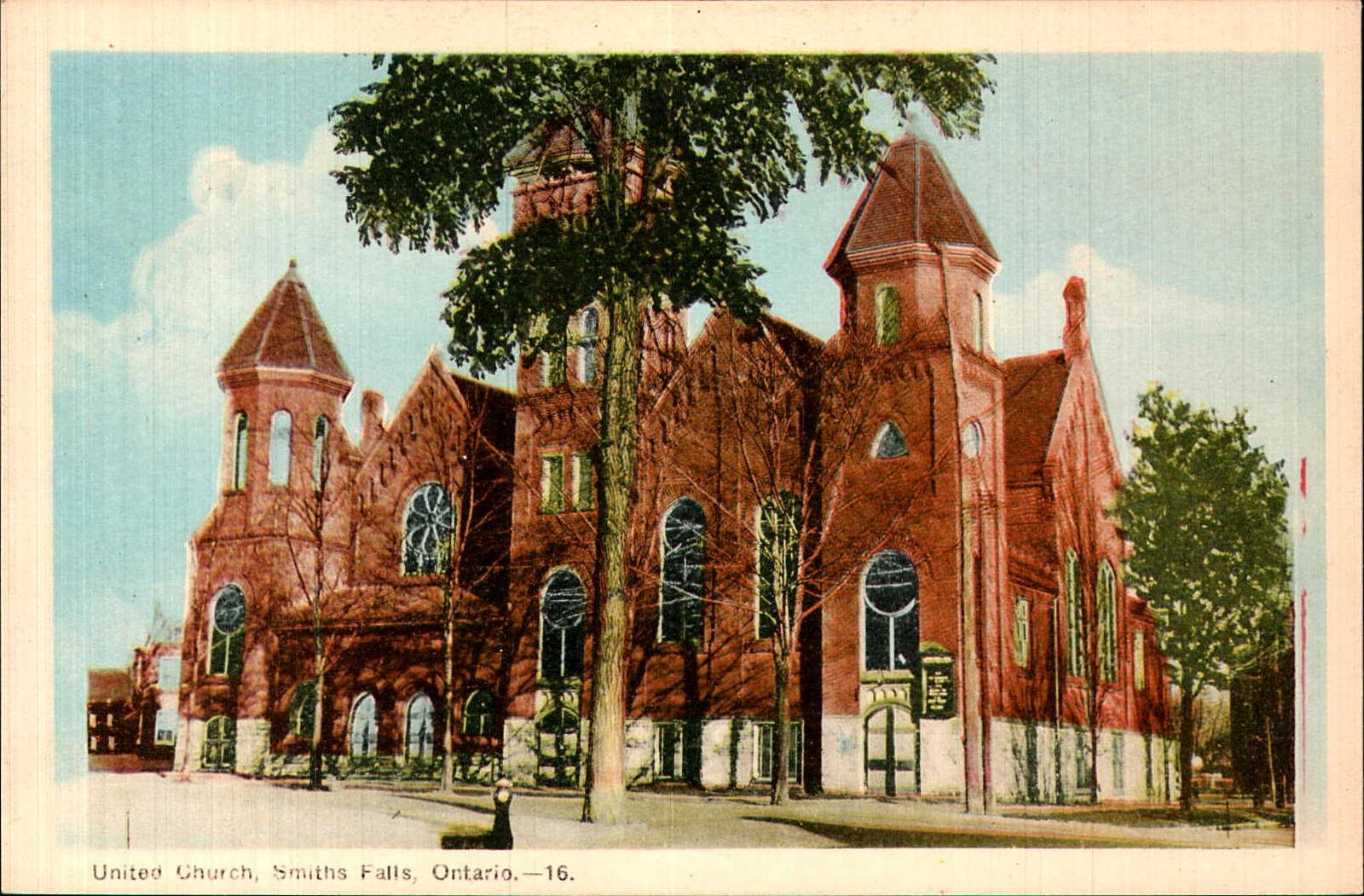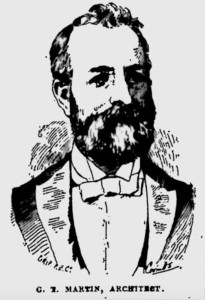
Architect extraordinaire: George T. Martin
George T. Martin, part I
Panels
George T. Martin, part IGeorge T. Martin, part IILinks
George Thomas Martin, Biographical Directory of Architects in Canada, 1800-1950
Trinity Methodist Church/United Church, Smiths Falls postcard Details
When we moved into the Keyhole House in Smiths Falls, we decided that the 1960s chandelier with space-age globes hanging in the front hall had run its course. Retro was replaced with Gothic in the form of a three-foot-tall, hexagonal lantern with translucent gold glass. A local antique store was the source of this wonderful piece of history. While electricians were suspending it from a heavy-duty fixture box, they explained that this Gothic lantern was used to light Trinity United Church—formerly known as Trinity Methodist Church. The architect who oversaw the rebuilding of the church in 1894-95, and the architect for the Keyhole House built in 1892, were one and the same… George Thomas Martin! Is it just an eerie coincidence, or was this lantern destined to illuminate the Keyhole House?
Born in 1844 in Surrey, England, George Thomas Martin immigrated to Canada in 1870. He settled in Toronto, where he worked as a carpenter and builder. His new life there began with heartbreak. After only two years of marriage, his first wife, Anne Maria Trotter passed away at the age of twenty-five. His son, George Frederick, passed away when he was less than a year old. In 1877, at the age of 35, Martin restarted his life, and married Grace Burt. They had five children together. In 1879, they moved to eastern Ontario where Martin was involved in the construction of stations and bridges for the Canadian Pacific Railway. By this time, Martin had begun working as an architect and contractor.
In early 1889, he moved to Smith’s Falls and opened an architectural office. He frequently ran an ad on the front page of the Rideau Record newspaper which read: G. T. MARTIN, ARCHITECT, VALUATOR, OFFICE-OVER UNION BANK, MAIN STREET EAST, SMITH’S FALLS. Martin became the architect of choice in Smiths Falls and the surrounding counties of Lanark, Leeds, and Grenville for nearly twenty-five years. He was renowned for his brusque Romanesque Revival style when it came to institutional and ecclesiastical creations. When possible, he made use of the ample supply of building stone found in the Hughes quarry near Perth. He frequently worked with local contractor, Matthew Ryan, and bricklayer, Herbert Allen.

George Martin Details
